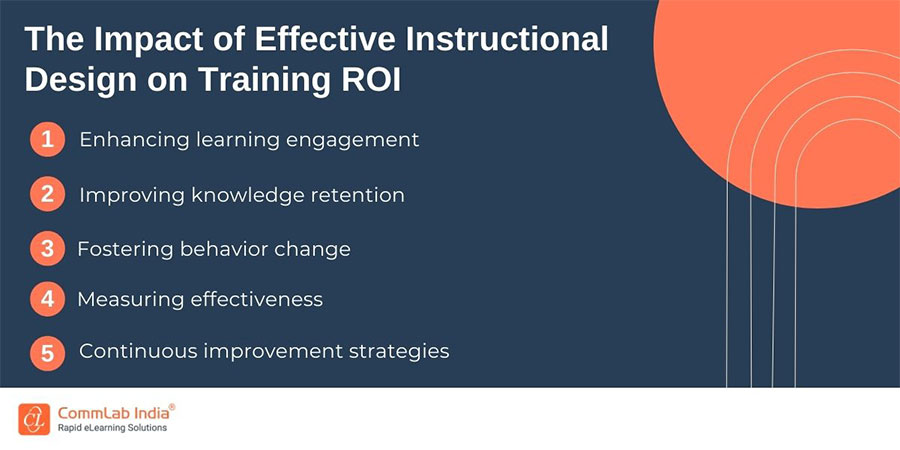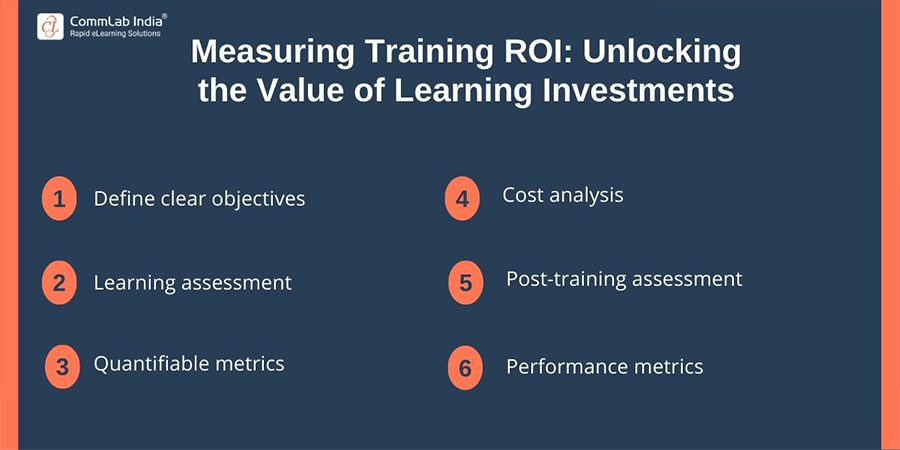Maximizing Training ROI: The Key Role of Effective Instructional Design
Effective instructional design is pivotal for maximizing training return on investment! Read on to how and why.

Are you tired of investing time, money, and effort into employee training programs only to see minimal results? If so, you're not alone. Many organizations struggle with maximizing their return on investment (ROI) when it comes to training initiatives. But fear not! In this blog post, we will uncover the secret behind achieving maximum ROI: effective instructional design. By understanding the key role that instructional design plays in training success, you'll be equipped with the tools and knowledge necessary to revolutionize your organization's learning outcomes.
The Essence of Instructional Design
Effective instructional design is not just about creating materials; it's a strategic process that can redefine the success of training programs.
Instructional Design to Make Learning Impactful
Instructional design is like the architect of effective learning experiences, guiding individuals to acquire knowledge, skills, and behaviors. It's not just about giving information; it's a thoughtful process. It involves understanding what learners need, designing tailored approaches, creating engaging content, delivering seamlessly, and checking how well it works.
The goal? Not just sharing facts but making sure learners remember and use them in real life. Effective instructional design goes beyond the basics. It creates an immersive learning journey, getting learners involved and eager to use what they learn. In simple terms, instructional design is the key to making learning experiences truly valuable.
The Impact of Effective Instructional Design on Training ROI

1. Enhancing Learning Engagement
Effective instructional design directly boosts ROI by increasing learning engagement. Active involvement and motivation lead to a more efficient training process. Imagine a sales team using interactive simulations for training, fostering engagement, and enhancing product knowledge and sales performance.
2. Improving Knowledge Retention
Crucial to ROI, effective instructional design improves knowledge retention. Simplifying complex information, interactive assessments, and varied instructional methods increase the likelihood of learners remembering and applying what they've learned. Picture a tech case study where instructional design enhances troubleshooting skills, impacting customer support efficiency.
3. Fostering Behavior Change
Instructional design goes beyond knowledge transfer; it fosters behavior change. Incorporating real-world scenarios, practical exercises, and simulations encourages learners to apply learned principles in daily interactions. Envision a leadership training program where realistic challenges drive behavior change and leaders actively apply their knowledge.
4. Measuring Effectiveness
Easier measurement of training effectiveness is a key contribution of effective instructional design to ROI. Tangible metrics like completion rates, assessment scores, and performance improvements indicate how well the design aligns with training objectives. Think of a customer service training scenario where satisfaction surveys contribute to demonstrating the ROI of the initiative.
5. Continuous Improvement Strategies
Instructional design doesn't stop at program launch; it extends into continuous improvement. Regular feedback and assessment allow organizations to adapt and enhance instructional design continually. Imagine an ongoing leadership development program evolving based on feedback, ensuring alignment with changing organizational needs.
Strategies for Effective Instructional Design
Effective instructional design is the cornerstone of successful learning experiences. To ensure your instructional design maximizes its impact, consider the following strategies:
1. Learner-Centric Approach
Tailor your instructional design to the needs, preferences, and characteristics of your learners. Understand their motivations, prior knowledge, and learning styles to create a truly personalized learning experience.
2. Clear Learning Objectives
Begin with well-defined learning objectives. Clearly articulate what learners should know or be able to do after completing the training. This sets the direction for your instructional design and helps in creating focused and relevant content.
3. Engaging Multimedia Elements
Incorporate multimedia elements such as videos, interactive simulations, and graphics to enhance engagement. Visual aids not only make content more interesting but also aid in better understanding and retention.
4. Interactive Assessments
Break away from traditional assessments and integrate interactive quizzes, case studies, and simulations. This not only evaluates comprehension but also reinforces learning through practical application.
5. Real-World Application
Connect theoretical concepts to real-world scenarios. Whether through case studies, practical exercises, or simulations, showcasing the practical relevance of the content enhances its application in actual job situations.
→ Download Now: Instructional Design 101 [eBooks]
6. Adaptability and Flexibility
Design your instructional materials to be adaptable to different learning environments and flexible enough to accommodate various learning styles. This ensures accessibility for a diverse audience.
7. Feedback Mechanisms
Implement robust feedback mechanisms. Regularly assess the effectiveness of your instructional design through learner feedback, assessments, and performance metrics. Use this information for continuous improvement.
8. Collaborative Learning Opportunities
Foster a collaborative learning environment. Encourage discussions, group activities, and peer-to-peer interactions. This not only enhances the learning experience but also promotes knowledge sharing among participants.
9. Technology Integration
Leverage technology for a seamless learning experience. Explore the use of Learning Management Systems (LMS), virtual classrooms, and other tools that enhance accessibility, tracking, and engagement.
10. Pilot Testing
Before full implementation, conduct pilot testing with a small group. Gather feedback, identify potential issues, and refine your instructional design accordingly. This iterative process ensures the effectiveness of the final training program.
By implementing these strategies, you can create an instructional design that not only meets the specific needs of your learners but also maximizes the overall effectiveness and impact of your training programs.
Here are 6 ID strategies for impactful learning experiences:
Measuring Training ROI: Unlocking the Value of Learning Investments

Measuring the ROI for training programs is essential to gauge their effectiveness and justify the resources invested. Here's how to measure the ROI of your training initiatives:
1. Define Clear Objectives: Start by defining specific and measurable objectives for your training program. Clearly articulate what success looks like to ensure precise measurement.
2. Learning Assessment: Conduct a baseline assessment before the training begins. This provides a benchmark against which you can compare post-training performance, helping quantify the impact.
3. Quantifiable Metrics: Identify and track quantifiable metrics aligned with your training goals. These may include increased sales, improved productivity, reduced errors, or enhanced customer satisfaction.
4. Cost Analysis: Calculate the total cost of the training program, considering development, delivery, and participant time. This forms the basis for comparing the investment against the achieved outcomes.
5. Post-Training Assessment: After the training, conduct assessments to measure the extent to which learning objectives were met. This could involve quizzes, surveys, or practical evaluations to gauge knowledge retention and application.
6. Performance Metrics: Connect training outcomes to performance metrics. Assess changes in key performance indicators (KPIs) directly influenced by the training, providing a tangible link between the program and organizational success.
Wrapping Up
In conclusion, this blog has highlighted the crucial role of effective instructional design in maximizing the return on investment for training programs. By delving into the strategies outlined, organizations can transform their learning experiences, fostering engagement, retention, and real-world application of knowledge. The principles of instructional design offer a roadmap to enhance training effectiveness and align programs with organizational objectives. Embracing these insights can lead to a significant shift in training outcomes, ensuring that efforts translate into measurable success for your organization.
Ready to elevate your training success? Download our eBook, "Instructional Design 101," for essential strategies to boost engagement and maximize impact. Don't miss out—take your training to the next level.
Download Now.





